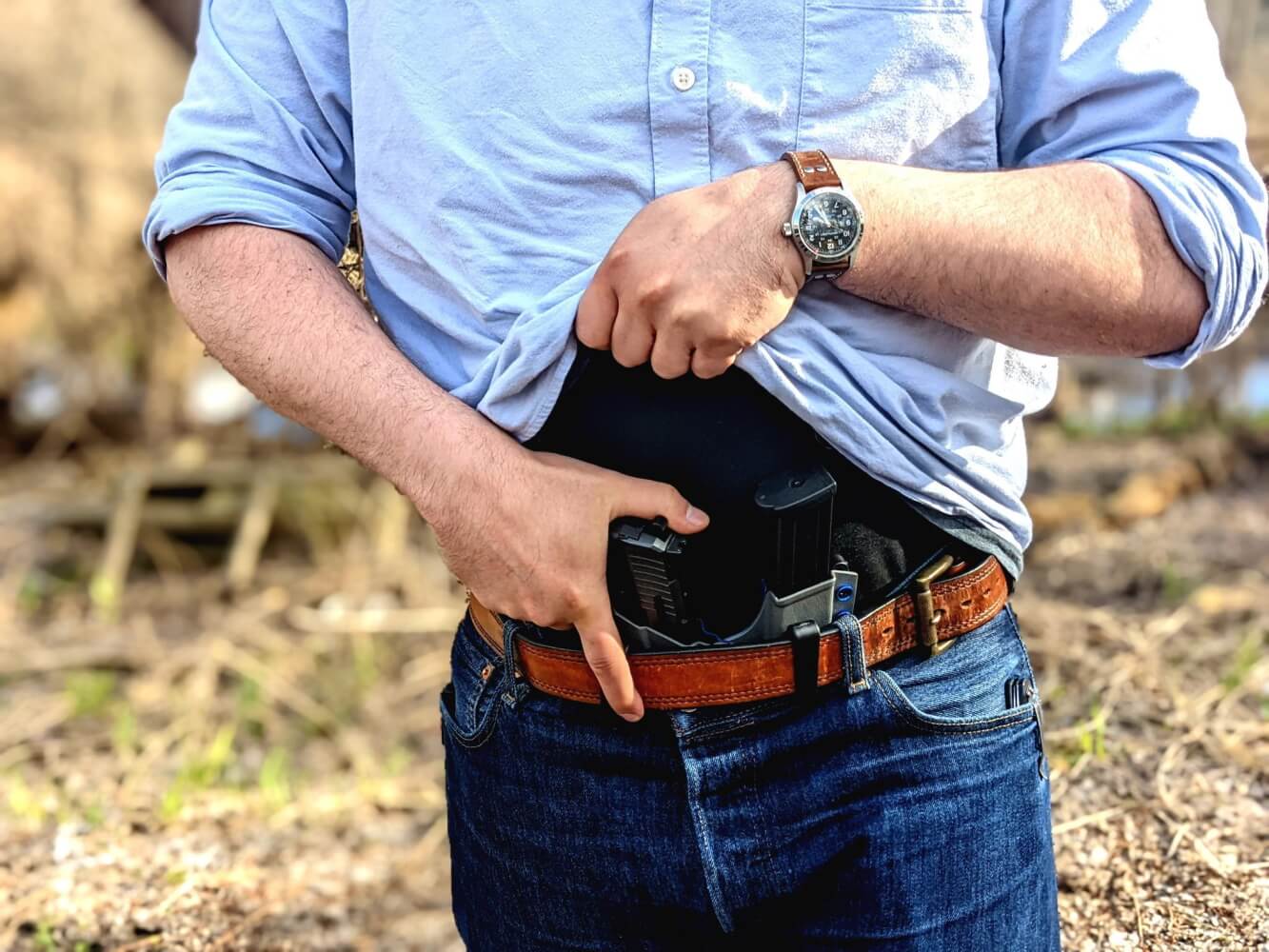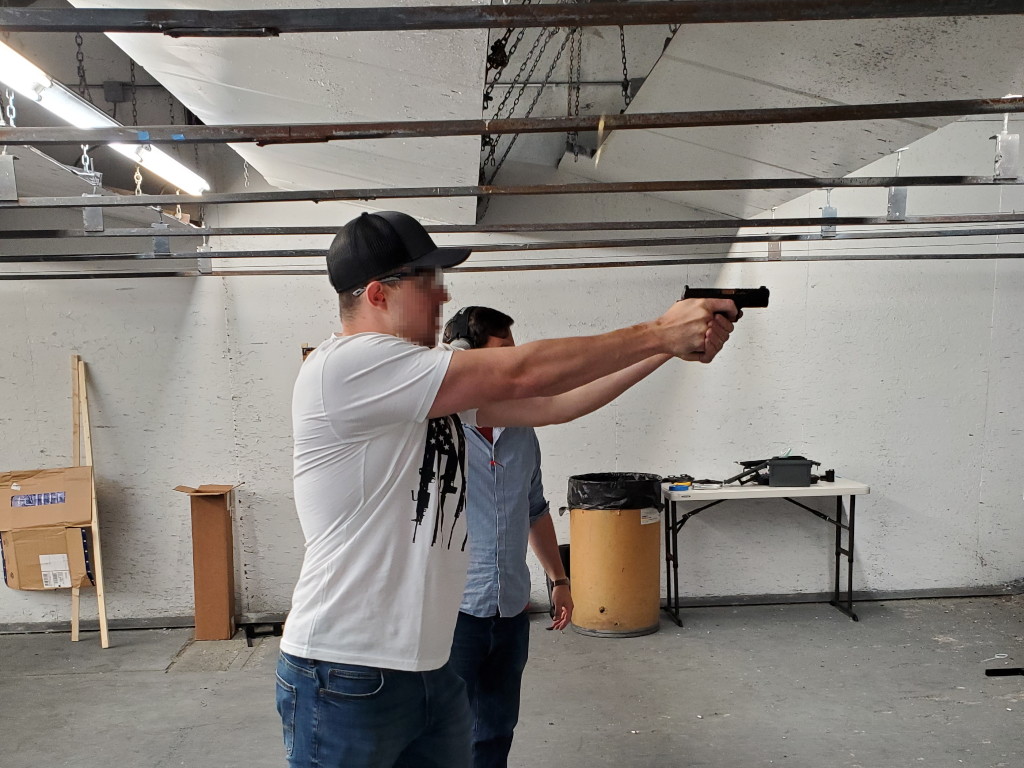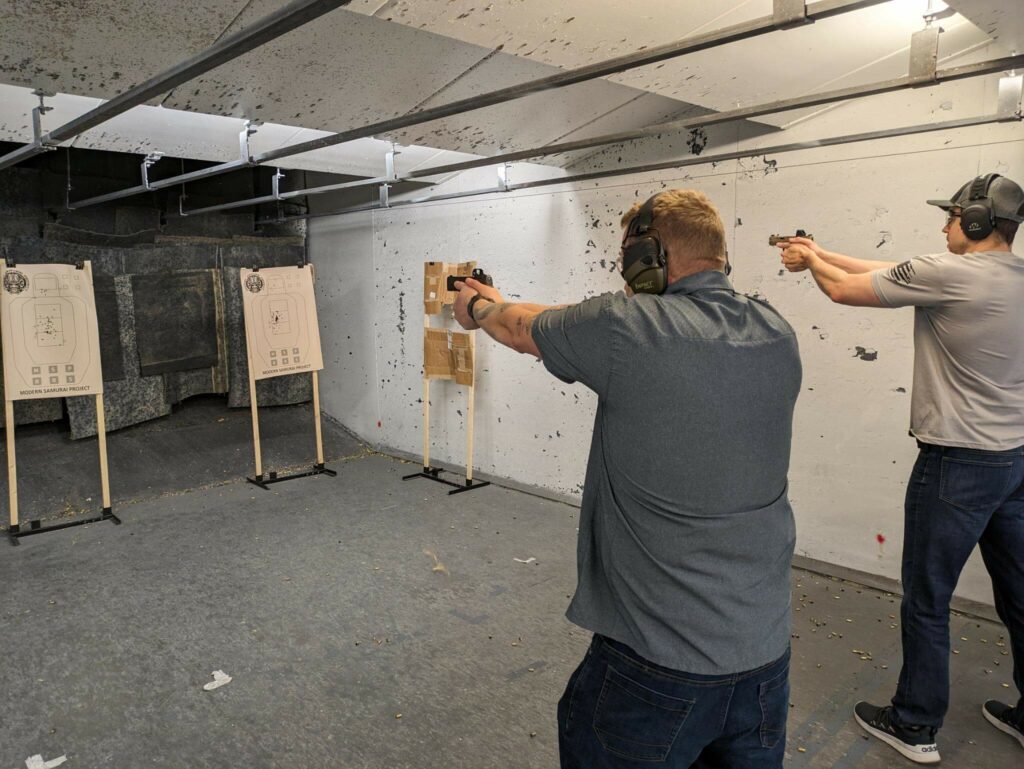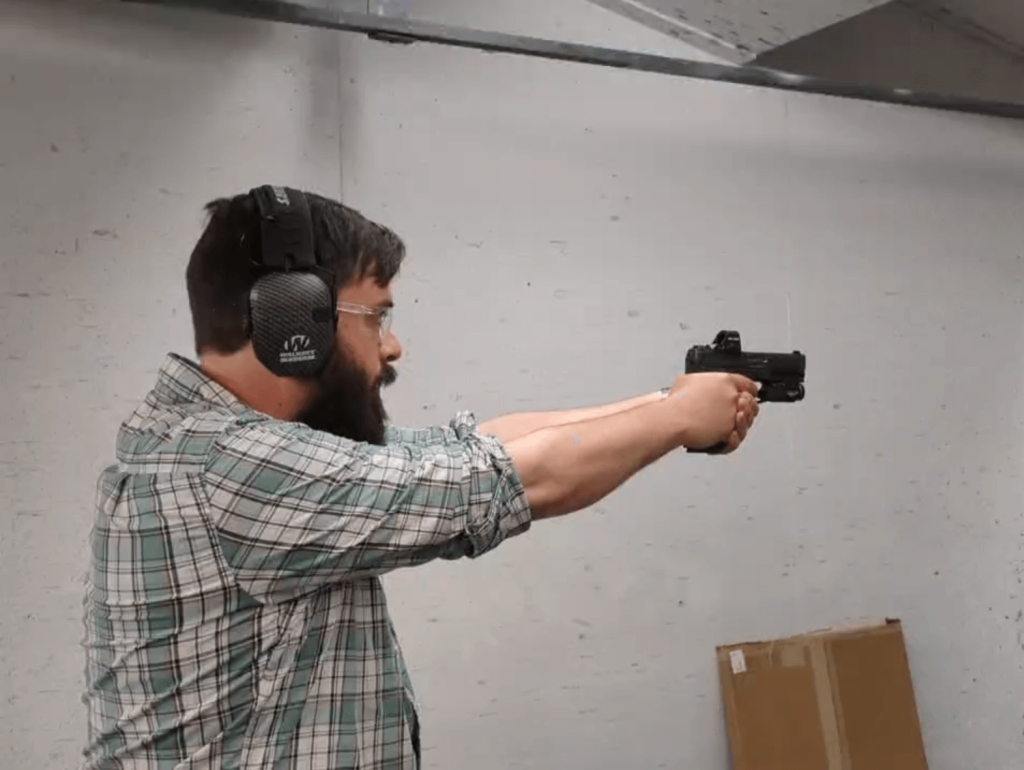Why I Swapped to Appendix Carry
When I started carrying, I started like most people, carrying strong side. I had a holster I liked, and generally found the setup worked for me. For over five years, I carried at around 2 O’clock every day. I had heard people talk about appendix carry, but I didn’t think it would work for me, for the typical reasons you hear: it was uncomfortable, it was dangerous, and it was slow / inefficient.
It wasn’t until I found Scott Jedlinksi of Modern Samurai Project that this changed. I was interest in transitioning to a red dot on my pistol, something Scott is well known for advocating, but as I dug in more, I also found he strongly suggested appendix carry. As I watched his videos and studied his methods, he was advocating for a way of carrying that was more efficient and solved some of the problems associated with strong side carry.
What Had I Gotten Wrong About Appendix Carry?
I had tried carrying appendix previously, but had gone about it the wrong way. I took a strong side holster, threw it in the front of my pants, and marveled at how uncomfortable it was. It wasn’t until I bought a kydex holster built specifically for appendix carry that I started to see how it could be comfortable. I experimented with the claw, wedge, and different spots and ultimately found one that worked. It was around this time I also moved to wearing an undershirt under my holster, which helped with my comfort significantly. I also upgraded to a stiffened belt from Beltman. I hadn’t realized that choices I had made in holster, belt, and clothing had made appendix carry uncomfortable and that some simple changes would make appendix carry work better for me.
Were Safety Concerns Overrated?
Another concern I had was the sensitive placement of the holster and muzzle. One way I mitigated this concern was by carrying a hammer fired gun; by putting my thumb on the hammer, it removed the danger of an accidental trigger pull during re-holstering. As I trained more at appendix and got used to carrying in that orientation, I found that following basic safety practices, such as clearing the trigger guard, thumbing the hammer, looking the muzzle into the holster, and avoiding bunchy under shirts reduced the risk of a negligent discharge. When I started carrying a striker fired gun appendix, I was confident that I had built good habits to ensure that a negligent discharge wasn’t going to give me a bad day.
On the flip side, I realized that while it felt safer to carry strong side, a negligent discharge would be just as destructive there as it would appendix carry. The reality is that safe carry practice is essential, regardless of how you carry. Appendix carry is no more dangerous or risky than any other carry method, and has a pretty big benefit: it is easy to watch the muzzle into the holster and visually ensure there is nothing obstructing the trigger guard, which is much harder to do on strong side and is impossible for small of back carry.
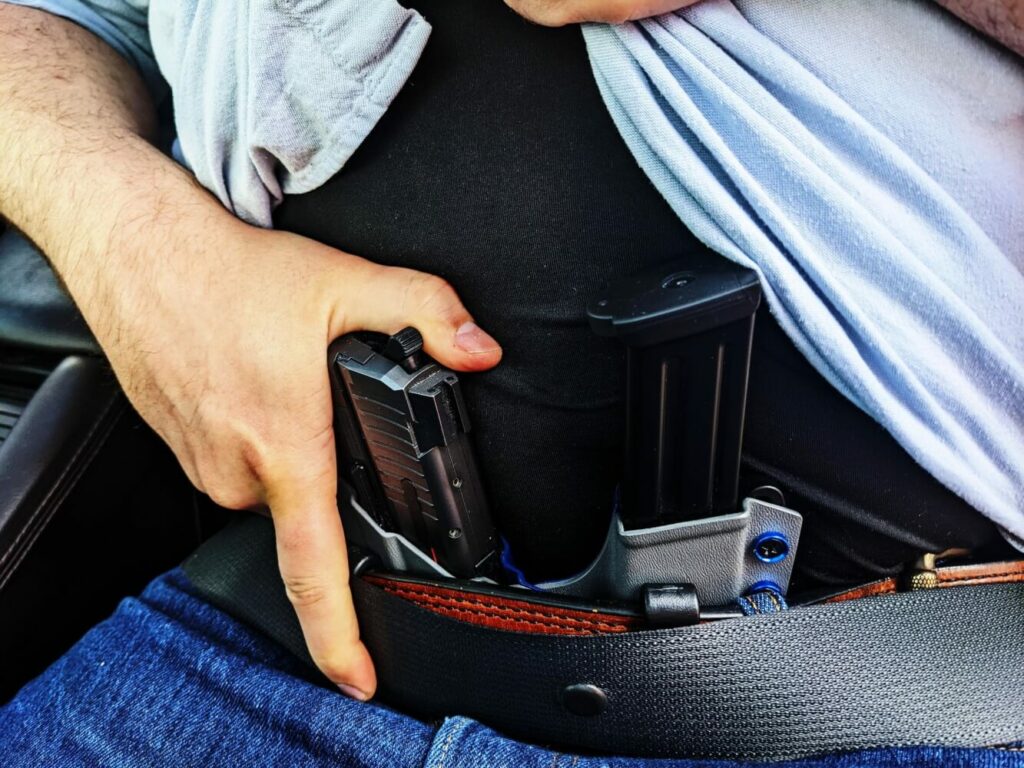
But Appendix Carry is Slow, Right?
Any time someone claims a new method is slower or less efficient than what they are currently doing, it begs the question: how much have they trained this new system? The claim that the new thing is slower would impact any new firearms method, whether it is carry style, red dot, grip method, or any other change you make. Any time you make a change from a well practiced, consistent method to some new one, you will naturally be slower than you were before. The true question is: is it worth training this new method to get better and faster? Is there something about the new method that is better than the current one I use, that makes it worth it to get slow temporarily for some long term benefit? Will I ultimately get faster? Will I find some efficiency? Is there some case that makes it better for me?
Benefits of Appendix Carry
In the case of carrying appendix, I think there are serious benefits that make it worth training. First, with training, appendix is faster and more efficient than strong side. The motion of an appendix draw is simple and more efficient, since it is straight up and down. Appendix carry keeps the gun in front of you, in a more controlled manner than strong side. There is no more knocking into things on the right side of your body because it isn’t floating off to the side. Likewise, I have less concern about losing control of the firearm to an assailant because it is right in front of me where I can control it with both hands and fight off a potential attacker. I’ve also found it easier to conceal than strong side and the addition of an extra mag in the side car type setup is an obvious benefit.
While all those other benefits are important, the one that really changed it for me was drawing from a seated position in a car. No matter what I tried, I could not find a way to draw while seated in the driver seat of my car with my seat belt on, with any consistency. The seat belt, the move across the body, and the pressure against the center console simply made my car draw untenable. I found that when I switched to appendix carry, my car draw became much easier and more consistent and I felt much more confident that I could quickly and easily deploy my firearm if need be.
I’ve found appendix carry is the best fit for me and I encourage those I train to try it. Ultimately, whatever carry method you use, it’s important that you are comfortable with that method and you train it consistently.
Any gear mentioned in this post was purchased for my personal use. I have not been compensated or incentivized by any company for any product reviews, highlights, or opinions.
Upcoming Live Fire Classes
Defensive Pistol Fundamentals – 1
Saturday, January 27th – 9am to 1pm
This class is a live fire training opportunity to work on defensive pistol skills. This first class will focus on fundamentals, including grip, site picture, and draw.
Intermediate Defensive Pistol – 2
Saturday, February 24th – 9am to 1pm
This intermediate defensive pistol class will focus on taking the next step in your firearms proficiency with items like target transitions, reactive targets, and reload drills.
Next Level Defensive Pistol – 3
Saturday, March 30th – 9am to 1pm
This next level defensive pistol class is an advanced class for practicing shooting and moving, transitions, and reactive targets.
Other Posts you Might Like
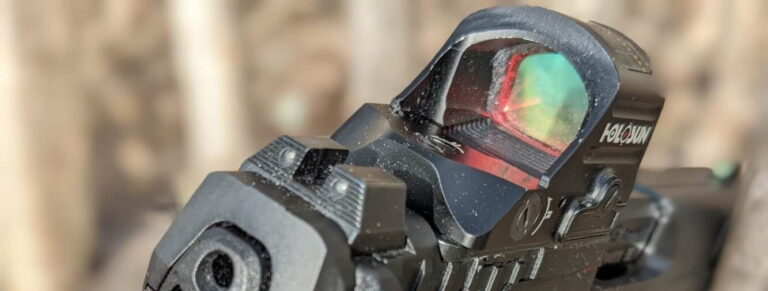
Holosun 407C X2 Review- 12K Rounds Later
*Updated February, 2024* I’ve been carrying the Holosun 407C X2 daily since 2021 and have over 12,000 rounds through it at the time of writing. Below is my experience with it over a few years and a few thousand rounds. Consider this a Holosun 407C X2 Review, just 12k+ rounds later. The vast majority of…
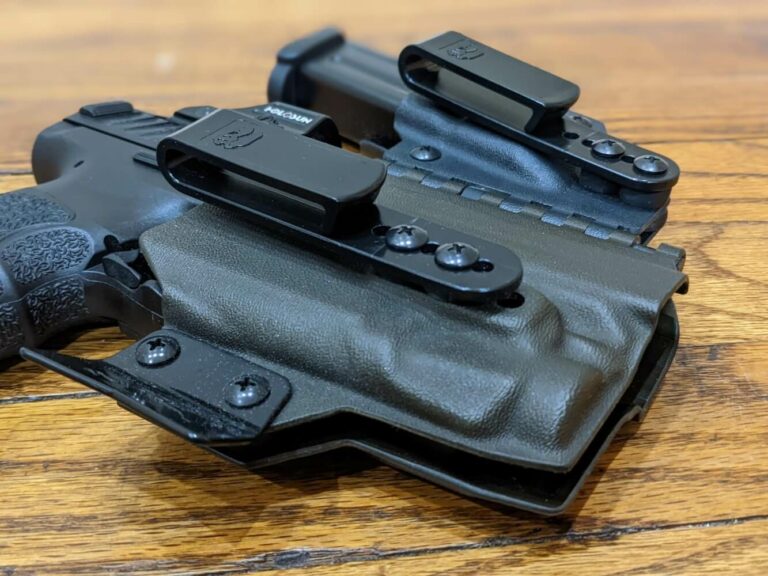
T.Rex Arms Sidecar Review
Updated 12.15.2023 with a reflection on two years of carrying. If you’ve been concealed carrying for any amount of time, you probably have a a collection of various holsters in different combinations for lights, guns, belts, sidecar setups, etc… When I saw T.Rex Arms had come up with a new Sidecar setup using a flexible…
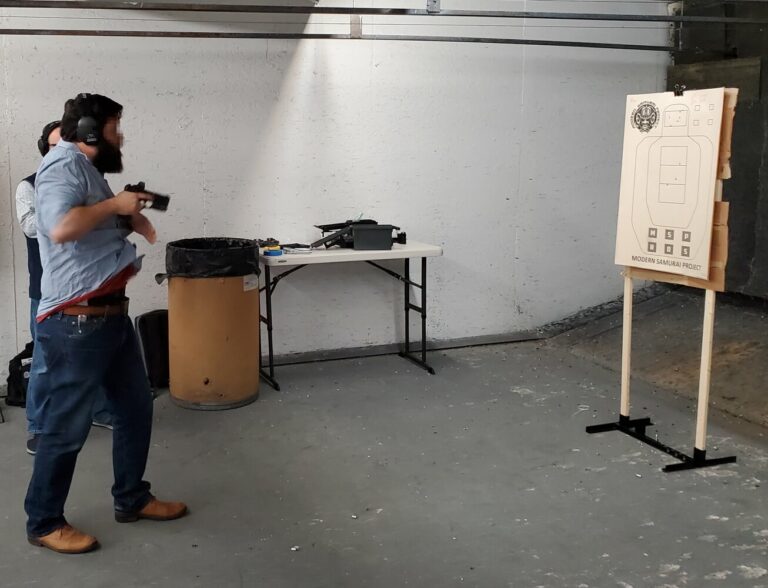
I’ve got my CCL – Now What? Next Steps for Concealed Carry
One of the most common questions I get is what to do once you have your concealed carry permit. Students who have taken a concealed carry class or friends who have just gotten their permit in the mail inevitably ask: Now what? What are my next steps for Concealed Carry? While different people may have…
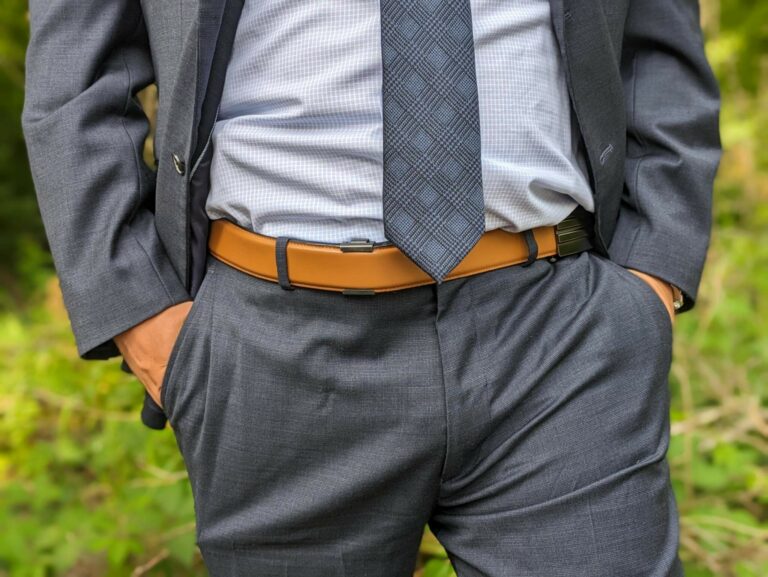
NeoMag Alias: A Great Low Vis Option
Updated December, 2023 Back in October of 2021, I picked up a NeoMag Alias, a low visibility belt clip option for concealed carry. I’d previously switched to carrying appendix a few months prior and needed something to wear with a suit that didn’t obviously show the clips. Carrying strong side on a suit was easy,…
